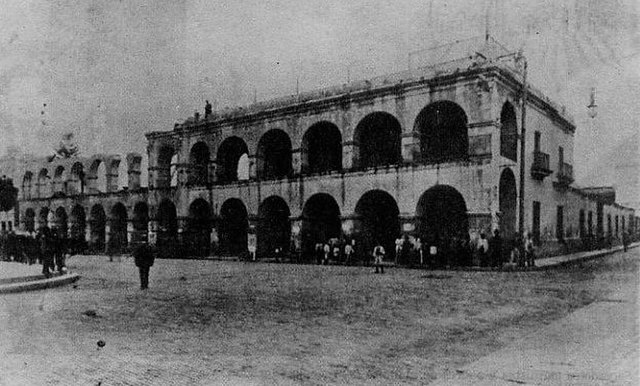The Casa Histórica de Tucumán is a historic building and museum located in San Miguel de Tucumán, Argentina, built during the colonial times. The Congress of Tucumán worked in this house during the Argentine War of Independence, and issued the Argentine Declaration of Independence on July 9, 1816. It was nationalized decades later, and partially demolished for its poor condition. It was declared a National Historic Monument of Argentina in 1941, and reconstructed, with simplified details, in its original layout.
Casa Histórica de Tucumán, site of the Argentine declaration of independence
Hall of the Argentine Declaration of Independence, with portraits of the voting representatives.
First known photo of the Casa de Tucumán, taken by Ángel Paganelli in 1869.
Entrance to the room where the Independence was declared, by Angel Paganelli, 1869.
San Miguel de Tucumán, usually called simply Tucumán, is the capital and largest city of Tucumán Province, located in northern Argentina 1,311 kilometres (815 mi) from Buenos Aires. It is the fifth-largest city of Argentina after Buenos Aires, Córdoba, Rosario and Mendoza and the most important of the northern region. The Spanish conquistador Diego de Villarroel founded the city in 1565 in the course of an expedition from present-day Peru. Tucumán moved to its present site in 1685.
From top, left to right: San Miguel de Tucumán Cathedral, Historical House of Independence, Basilica of San Francisco, Ninth of July Park, National University of Tucumán, Tucumán Government Palace, view of Barrio Norte and the house of Bishop Colombres.
Panoramic view of the city's center
"Tucumán 1812", by Gerardo Flores Ivaldi. The Cabildo and San Francisco church are displayed on the painting.
Demolition of the former Cabildo, 1908.








